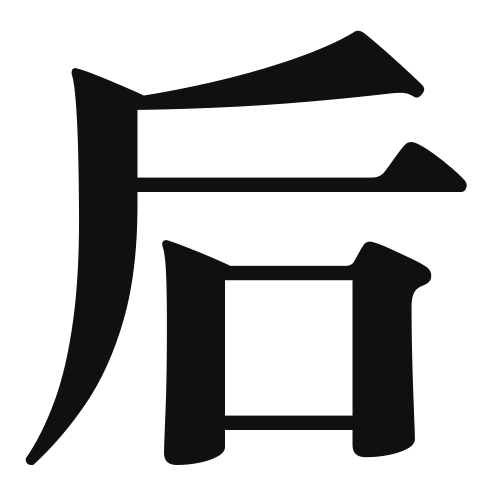1. Overview of Meaning
The kanji “後” (pronounced “ato” or “go”) primarily means “after” or “behind.” It is used to indicate a position or time that comes after something else.
2. Formation and Radical
The kanji “後” is a phonetic-ideographic character (形声文字), which combines a meaning component and a phonetic component. The left part, “口” (kuchi), represents the mouth, while the right part, “後” (go), conveys the idea of “behind” or “after.” The radical for this kanji is “口,” which relates to speech or sound.
3. Examples of Usage
Common words and phrases that include “後” are:
- 後ろ (ushiro) – behind
- 後で (ato de) – later
- 午後 (gogo) – afternoon
Example sentences in daily conversation:
- 会議の後で、食事に行きましょう。 (Kaigi no ato de, shokuji ni ikimashou.) – Let’s go for a meal after the meeting.
- 彼は後ろにいます。 (Kare wa ushiro ni imasu.) – He is behind.
4. Synonyms and Antonyms
Similar kanji with related meanings include:
- 前 (mae) – meaning “before” or “in front of.” While “後” indicates something that comes after, “前” indicates something that comes before.
Antonyms include:
- 前 (mae) – as mentioned, it means “before,” which is the opposite of “後.”
5. Cultural and Historical Background
The kanji “後” has significant relevance in Japanese culture, often used in various contexts such as time management and scheduling. It appears in proverbs and idiomatic expressions, such as:
- 後悔先に立たず (Kōkai saki ni tatazu) – “Regret does not come before.” This means that one should think ahead to avoid regrets.
This reflects the cultural emphasis on foresight and planning in Japanese society.
